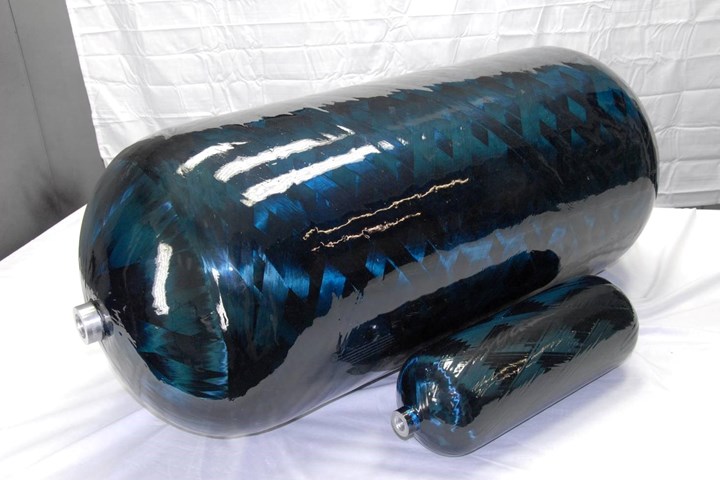CST Composites targets global green hydrogen supply chain in Australia
JV with U.S.-based hydrogen storage tank manufacturer Optimum Composite Technologies and first Australian hydrogen vessel manufacturing facility will service emerging and growing demand.

Photo Credit: Optimum Composite Technologies
After 26 years in business, CST Composites (Kurnell, Australia) is positioning itself to be a leading player in the global green hydrogen supply chain through a joint venture (JV) with U.S.-based hydrogen storage tank manufacturer Optimum Composite Technologies (Brigham City, Utah, U.S.).
The JV will see CST Composites expand its core capabilities to support the growth of Optimum’s business in designing and producing composite pressure vessels (CPVs), which are used to store hydrogen, renewable natural gas (RNG) and have many other applications.
With two manufacturing facilities already based in Australia, CST’s growth plans include establishing Australia’s first hydrogen vessel manufacturing facility, which will reportedly service emerging and growing demand from the defense (e.g., vertical takeoff and landing/VTOL vehicles), space (e.g., rockets), transport and energy sectors. According to CST, the additional facility will also help advance Australia’s National Hydrogen Strategy, which highlights the need to develop the country’s supply chain infrastructure, including hydrogen storage tanks.
The JV will complement both companies’ manufacturing abilities. CST Composites will have access to Optimum’s technical expertise and Intellectual Property (IP) in carbon fiber pressure vessels. CST Composites will also gain greater access to U.S. markets for its high-quality, filament-wound composite tubing by leveraging Optimum’s U.S. facilities, customer base and supply chain.
“High-pressure gas storage vessels are one of the biggest and fastest-growing markets globally for advanced composites, particularly for filament-wound carbon fiber composites,” CST Composites managing director, Clive Watts, notes.
Watts references recent significant corporate developments include Hanwha Solutions’ (Seoul, South Korea) acquisition of U.S. hydrogen storage tank manufacturer Cimarron Composites and its plans to invest $100 million to expand the business. There are also developments in this field by Hexagon Composites (Alesund, Norway), Faurecia (Nanterre), Plastic Omnium (Lavallois), NPROXX (Heerlen, Netherlands), Iljin Composites — renamed Iljin Hysolus (Bongdong-eup, South Korea) and newer entrants such as B&T Composites (Florina, Greece), Steelhead Composites (Golden Colo., U.S.) and more —CW covers the growth in hydrogen extensively through these Part 1 and Part 2 articles.
Overall, the Australian Government is investing $1.4 billion to position Australia as a major hydrogen player by 2030. Mr Watts says, “we will be applying for the grants and financial support available to advance our projects, which focus on the innovative design and development of hydrogen and CPV products. We are planning to make a significant investment to grow our new joint venture.”
The company was a recent recipient of funding under Round 2 of the Australian Government’s Manufacturing Modernisation Fund.
Related Content
-
On the radar: Cryogenic testing of composites for future hydrogen storage
Netherlands, U.K., France, Germany and the U.S. build up test capability, look at thermoset and thermoplastic composite materials.
-
TU Munich develops cuboidal conformable tanks using carbon fiber composites for increased hydrogen storage
Flat tank enabling standard platform for BEV and FCEV uses thermoplastic and thermoset composites, overwrapped skeleton design in pursuit of 25% more H2 storage.
-
Hexagon Purus opens new U.S. facility to manufacture composite hydrogen tanks
CW attends the opening of Westminster, Maryland, site and shares the company’s history, vision and leading role in H2 storage systems.
















